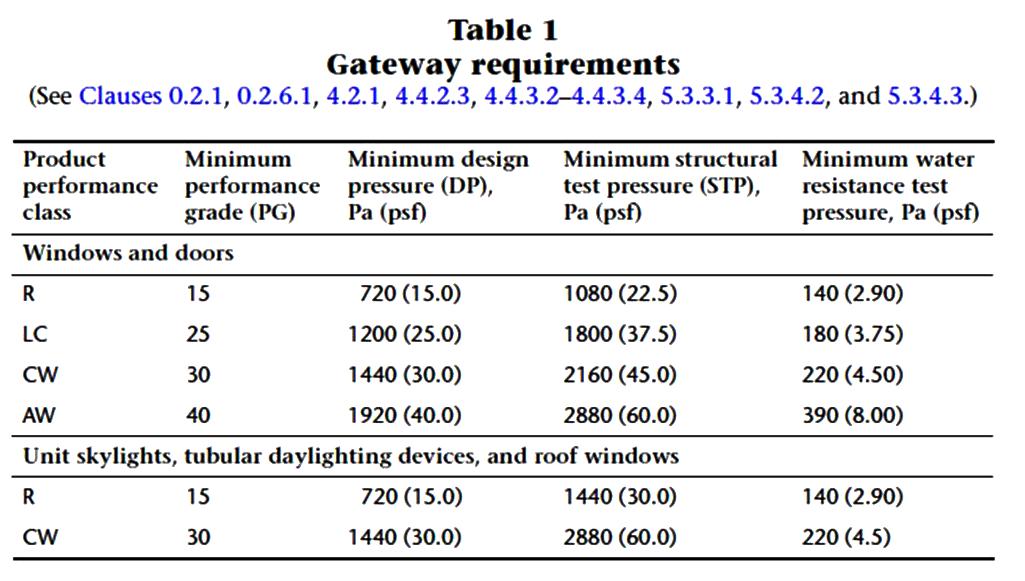NAFS
NAFS (North American Fenestration Standards)
When we tested our windows in 2009 we knew very little about how NAFS would come in to play in the future of our window company. Since then, NAFS has been implemented in the Canadian Building Code and is meant to harmonize Canadian and American testing standards for windows and doors. These standards exist to make sure windows are strong enough to stand up in the environment in which they're installed. In Canada, however, NAFS 08 must be used in conjunction with the Canadian Supplement. The Canadian Supplement understands the differences and uses that informaton to figure out the specific standards that windows must meet, through use of geographic, climatic and terrain parameters.
- Uniform load tests
- Air and water penetration resistance
- Operability
- Forced Entry
- Fabrication Quality
- Stiffness and Stress tests
- Hardware load tests
- Other tests for durability, and life cycle test
Gateway Requirements in each Performance Class has a set of requirements, these are minimum test sizes and pressures that each product must meet to qualify for a Performance Class.

The first thing you will notice is that each Class has a higher minimum Performance Grade, design pressure, structural test pressure and water penetration resistance test pressure than the Class before. The Classes are Ranked with R having the least stringent requirements, followed by LC, CW and AW.
This time when we tested our windows, we made our windows larger and within the size specifications for Class LC, which is the same as Class CW. Our goal was to have our windows qualify for Class LC as we wanted to have the option of having our windows installed not only in single family homes, but also multi-family dwellings. A Performance Class LC with good Performance Grade numbers would allow that. We were pleasantly surprised when our windows surpased even the LC class when tested and qualified for Class CW with excellent Performance Grades.
The results from our windows are as follows:
- Vinyl Fixed Picture (LPF - Low Profile Frame) Class CW PG -100 Size - 68" x 60" (1727 mm x 1524 mm)
- Vinyl Fixed Casement /Sash (HPF-High Profile Frame) Class CW PG -100 Size - 59' x 59'' (1500 mm x 1500 mm)
- Vinyl Casement (CAS - Casement) - Class CW PG 75 Size - 31" x 59" (800 mm x 1500 mm)
- Vinyl Awning (AWN - Awning) - Class CW PG 70 Size - 49" x 39" (1245 mm x 991 mm)
For more information about Energy Star and NAFS at www.nrcan.gc.ca
Do all windows made in Canada have their windows tested to NAFS 08 and the Canadian Supplement?
Unfortunately, not all provinces of Canada choose to comply with the new NAFS standards. Alberta, Quebec and New Brunswick, except for the city of Moncton, are not compliant with the newest NAFS standards. They choose to use older Building Code and only require windows tested to the older CSA 440 requirements. You may not think this will affect you in Saskatchewan, however, should you purchase windows made in Alberta and bring them to Saskatchewan to install into your home, be aware that when you apply for your building permit, it will state that NAFS 08 compliant windows and doors are required. Whether or not your building inspector enforces it is at his or her discretion.
 Print
Print